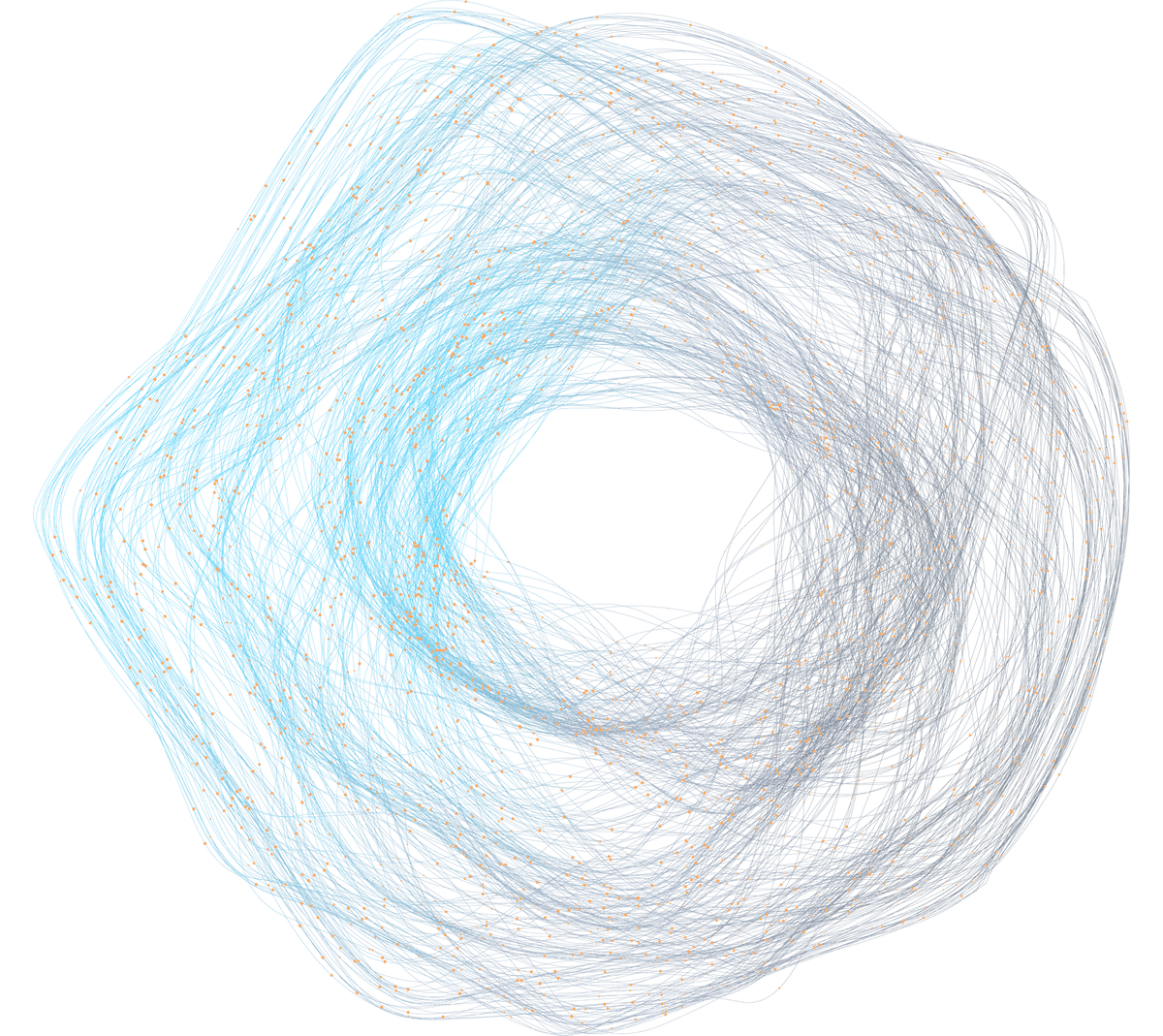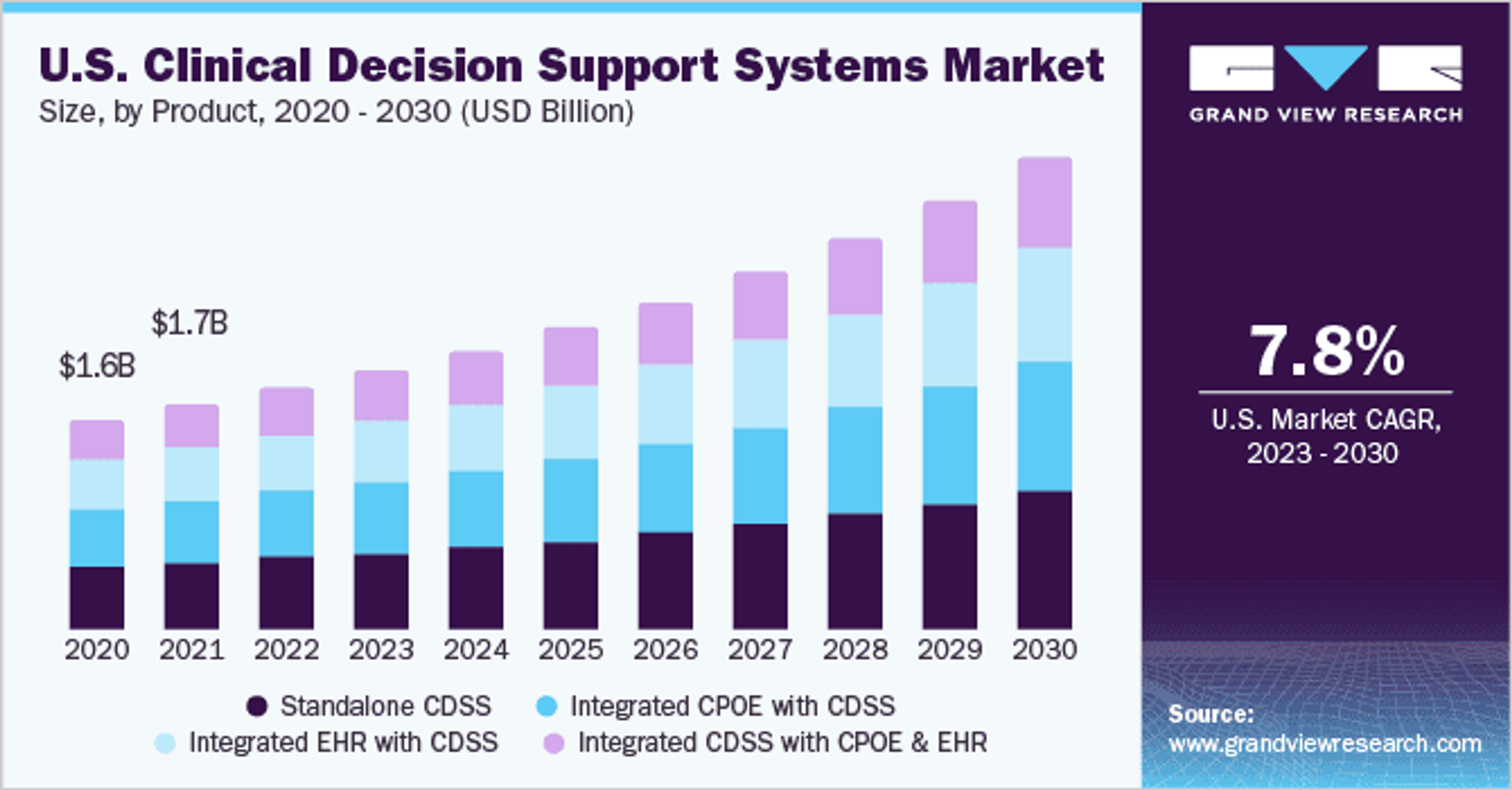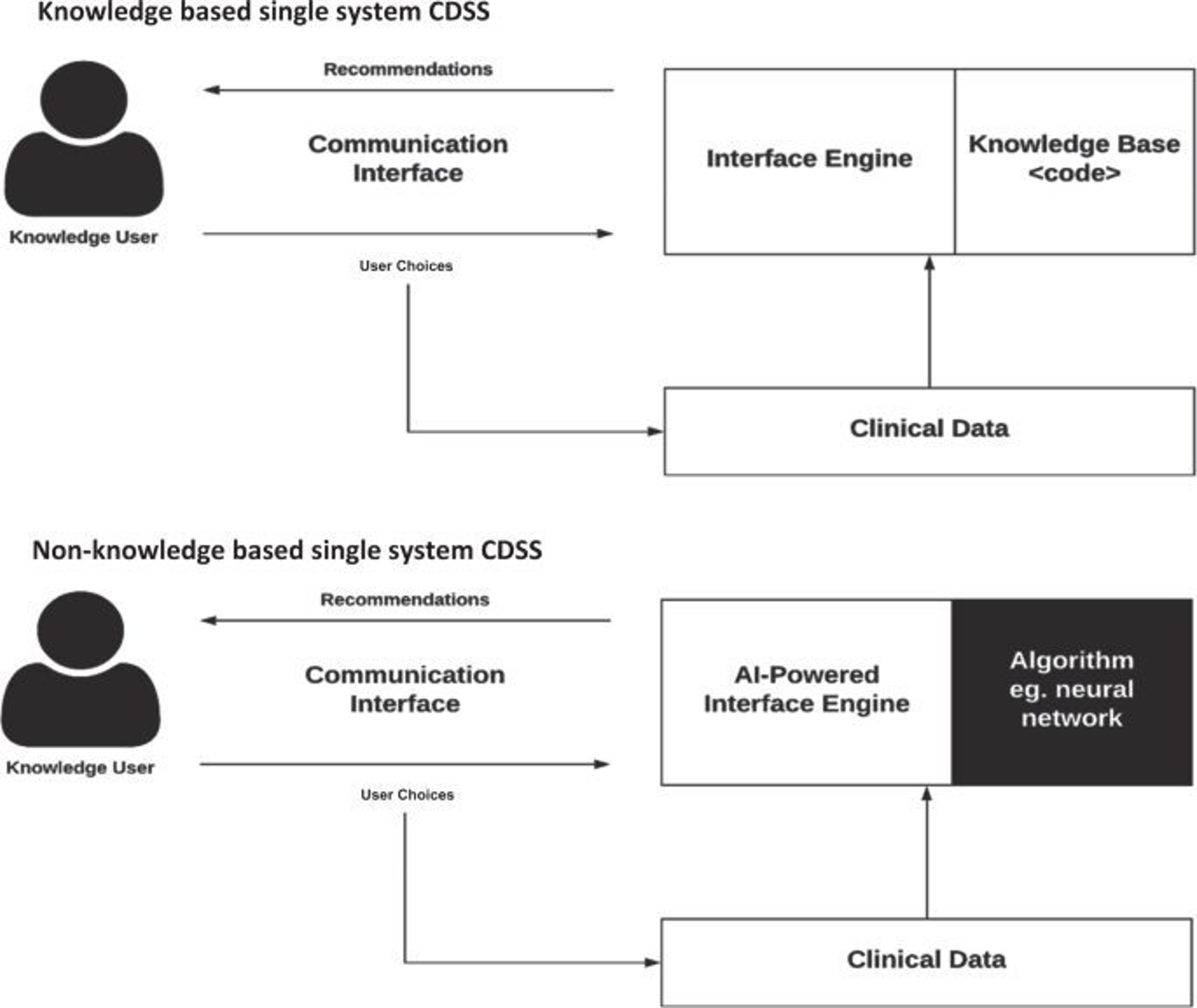blog
What a Clinical Decision Support System Can Do for You

SECTIONS
Clinical decision support systems (CDSS) are catalyzing a revolution in the healthcare and life sciences industries. They provide sophisticated and real-time insights that enhance key areas like decision-making accuracy, patient care quality, research capabilities, and operational efficiency.
Today, CDSSs are a cornerstone of the sector, enabling organizations to operate effectively and deliver desired healthcare outcomes, even in rapidly-evolving and fast-changing environments.
In this article, we’ll explore the evolution of CDSS systems, their key features, and the powerful benefits of embracing them in your own healthcare or life sciences organization sooner rather than later.
Key Takeaways:
- Clinical decision support systems are software tools that provide insight to enhance medical diagnoses, inform research, and support patient care.
- There are two main types of CDSSs: knowledge-based and non-knowledge based.
- Important benefits that CDSSs deliver in the healthcare and life sciences sectors include: better decision making, reduced errors, higher efficiency, more personalized care, large-scale insights, cost savings, and greater regulatory compliance.
What is a Clinical Decision Support System?
Clinical decision support systems are comprehensive software platforms that provide data-driven insight and recommendations to enhance medical diagnoses, inform research, and support patient care.
While CDSSs have been in use for decades, the increased use of electronic health records (EHRs) in recent years, coupled with the integration of technology tools into everyday operations, have made them a mainstay of the modern healthcare and life sciences industries.
The current global market size for clinical decision support systems is valued at nearly $5 billionOpens in a new tab and expected to grow steadily for the foreseeable future. In the U.S. alone, it’s predicted to maintain a CAGR of 7.8% through 2030.

Image Source
CDSS growth in the U.S. has gotten indirect support over the years from the HITECH ActOpens in a new tab, passed in 2009 to promote the use of meaningful healthcare IT.
The Act outlined potential funding and reimbursement reductions for organizations and practitioners that failed to embrace it, motivating even tech-laggard organizations and providers to get on board. As a result, nearly every healthcare organization now uses a CDSS in some capacity.
Knowledge Based vs. Non-Knowledge Based CDSS
Clinical decision support systems can be categorized into two main types: Knowledge-based and non-knowledge based. Understanding the distinction between these systems is crucial for healthcare and life sciences leaders considering CDSS implementation.

Image Source
Knowledge-Based CDSS
Knowledge-based CDSSs rely on extensive databases of medical knowledge, guidelines, and clinical best practices. These systems use rule-based reasoning and algorithms to provide insight, recommendations, and alerts to users. They draw knowledge from a massive data repository to inform decisions.
Knowledge-based CDSSs are adept at handling complex scenarios and are used for things like diagnosing rare diseases or suggesting treatment options based on established protocols.
Non-Knowledge Based CDSS
Non-knowledge based CDSS, on the other hand, operate without predefined rules or by mining extensive databases. Instead, they employ advanced machine learning and artificial intelligence techniques.
These systems learn from data patterns, adapting and improving their recommendations over time. They excel in situations where medical knowledge is limited or rapidly evolving, meaning they can be especially useful for research and development in the life sciences space.
As for patient care, they’re still in their earliest stages of adoption and have some challenges to overcome before they can experience widespread use, especially as it relates to decision process transparency. Still, as AI-powered CDSS technology advances, non-knowledge based CDSSs will likely have a more direct role in healthcare and patient engagement.
10 Benefits of a Clinical Decision Support Systems
Now that we have a clear overview of clinical decision support systems, their types, and their role in the healthcare and life sciences sectors, let’s explore some of the most powerful benefits they deliver.
1. Enhanced Decision-Making
CDSSs provide healthcare professionals and researchers with valuable insights and evidence-based recommendations, leading to more informed decisions. This can result in improved diagnostic accuracy, optimized treatment plans, and better patient outcomes.
2. Reduced Medical Errors
CDSSs can help mitigate human errors by flagging potential issues, such as drug interactions, allergies, or incorrect dosages. By providing real-time alerts and reminders, CDSSs contribute to higher patient safety and reduce the risk of adverse events.
3. Improved Efficiency
The automation of certain tasks and data analysis processes by clinical decision support systems allows healthcare providers and researchers to work more efficiently. This means reduced administrative burden, faster access to critical information, and streamlined workflows.
4. Continuity of Care
CDSSs ensure that patient data is consistently accessible across different healthcare settings. This promotes continuity of care, as healthcare professionals can easily access a patient’s medical history and treatment plans, even when transferring between providers.
5. Personalized Medicine
CDSSs can tailor treatment recommendations to individual patient profiles, taking into account factors like genetics, lifestyle, and medical history. This personalized approach to medicine can translate to more effective treatments and better patient outcomes.
6. Support for Research and Development
In the life sciences sector, CDSSs accelerate research and development efforts. They aid in data analysis, patient recruitment for clinical trials, and the identification of potential drug candidates. This significantly shortens the time to market for new therapies and interventions.
7. Cost Savings
Clinical decision support systems can help healthcare organizations optimize resource allocation, reduce unnecessary tests or treatments, and minimize hospital readmissions. These cost-saving measures are particularly important in today’s era of rising healthcare expenses.
8. Clinical Compliance
CDSSs help healthcare institutions adhere to clinical guidelines and best practices, ensuring compliance with regulatory requirements. They also support ongoing quality improvement efforts by identifying areas for enhancement in care delivery.
9. Large-Scale Insights
By analyzing vast amounts of healthcare data, CDSSs generate valuable analytics-based insights for research and policy development. These insights can inform large-scale population health management strategies and public health initiatives.
10. Future-Proofing Healthcare
As healthcare becomes increasingly data-driven and complex, CDSSs play a pivotal role in future-proofing the industry. They allow healthcare leaders to stay ahead of emerging trends and technologies, ensuring that their organizations remain competitive and innovative.
Looking Ahead
Incorporating a clinical decision support system into healthcare and life sciences operations can bring about transformative changes, including better patient care, accelerated research timelines, cost savings for patients and providers, and optimized resource utilization.
As we move to the future, the benefits of CDSSs will extend beyond these immediate gains, positioning organizations to thrive in a rapidly evolving healthcare landscape.
Learn how the Gaine Healthcare Data Model can put your organization ahead of the curve.
